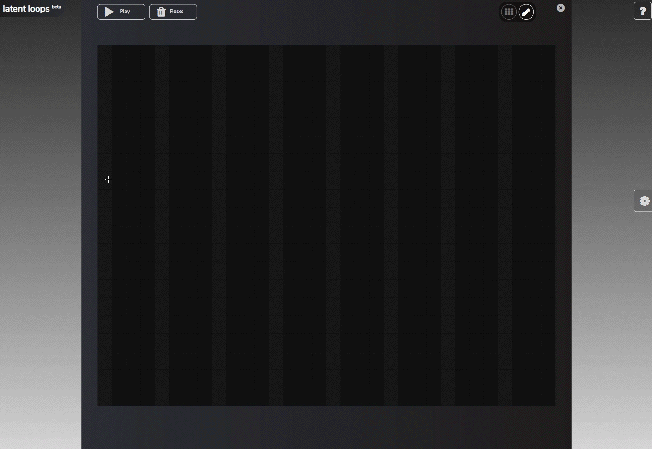LATENT LOOPS INTERFACE
Latent Loops is an experimental musical interface that uses machine learning to create a palette of melodic loops based on a musician’s input.
The machine learning model it uses, MusicVAE, allows you to blend different musical attributes (melody, rhythm, note density, etc.) like you might blend different colors of paint, but to use it out of the box you have to know quite a bit about programming. MusicVAE was created by members of Google’s Magenta Project which is an open-source research project that explores the role of machine learning in the process of creating art and music.
Latent Loops takes the melody portion of MusicVAE and turns it into an electronic instrument designed to be used by and useful to musicians of all levels.
Sketch melodic ideas in the corners of the interface. The note matrix you compose on can be tuned to different scales, which means that even random squiggles will sound pretty musical. Press the lightning bolt and MusicVAE encodes the melodies you created, then generates a palette of new loops that riff, vary, and blend between them. Explore the palette by mousing around. Save loops you like on the clipboard. Tweak melodies you almost like by double-clicking to access the note matrix. You can sequence a longer composition in the timeline, then easily move it over to your DAW of choice, as the browser-based instrument has MIDI out.
You can also use MIDI clock sync to play a palette as a live instrument in sync with material created in a DAW, or other MIDI-enabled device.
Check out my post on the Magenta blog, ML as Collaborator: Composing Palettes with Latent Loops.
CREDITS
Magenta, MusicVAE: Adam Roberts, Jesse Engel, Doug Eck
Concept: Catherine McCurry
Design: Alvin Yeung, Catherine McCurry
Software: Catherine McCurry, Zach Schwartz, Harold Cooper

